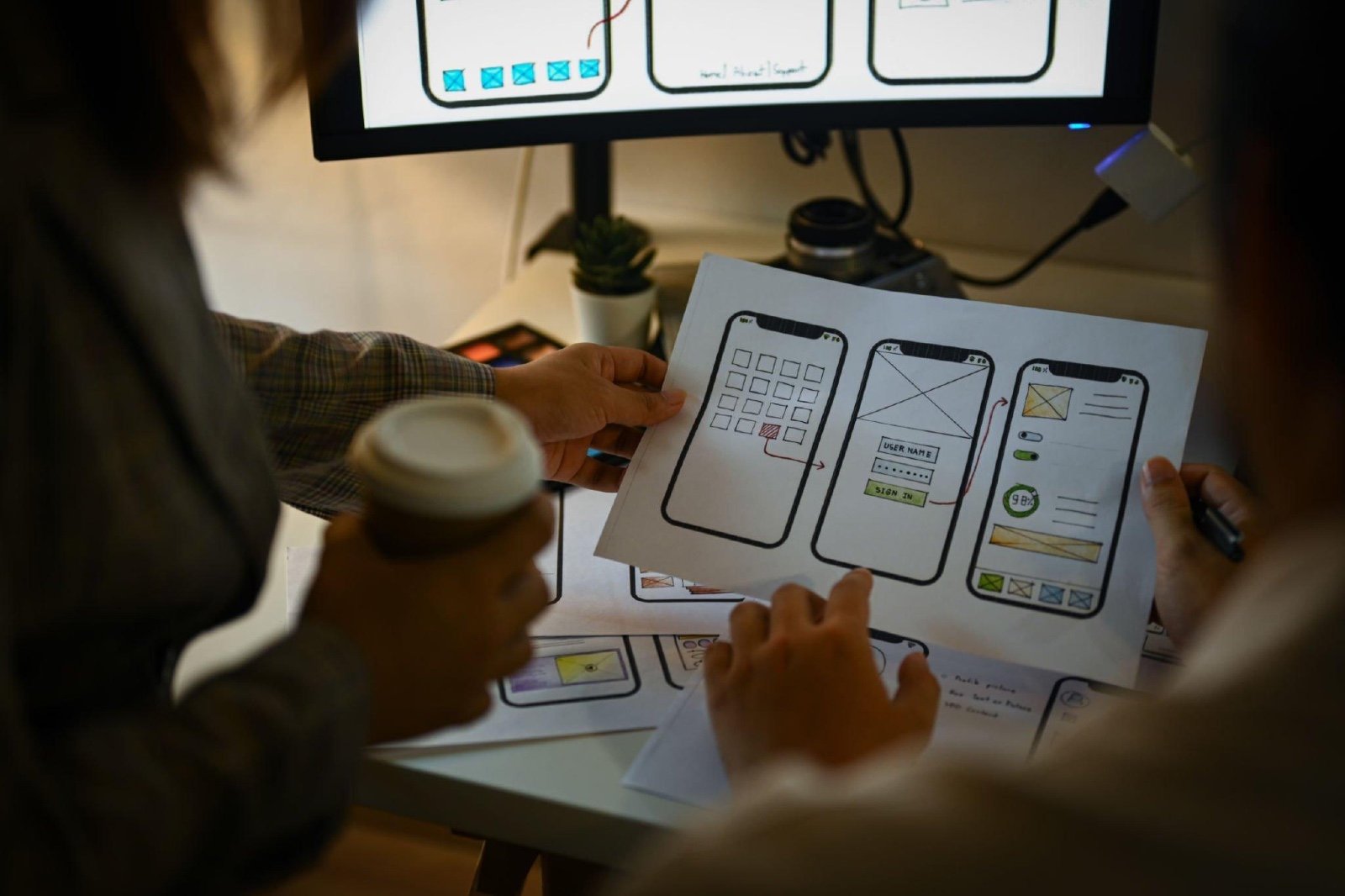Designing for Impact: The Strategic Role of UI/UX in Innovation
Designing for Impact: The Strategic Role of UI/UX in Innovation
Introduction
In the Designing for Impact ever-evolving landscape of technology and digital experiences, the strategic intersection of User Interface (UI) and User Experience (UX) design plays a pivotal role in driving innovation. This article explores how the thoughtful integration of UI/UX design principles can lead to impactful and innovative solutions, reshaping the way users interact with digital products and services.
Unveiling the Dynamics of UI/UX Designing for Impact
Defining UI and UX
User Interface (UI) design focuses on the visual and interactive elements of a product, ensuring a seamless and visually appealing user interface. User Experience (UX) design, on the other hand, is concerned with the overall experience users have with a product, encompassing usability, accessibility, and the emotional response elicited.
The Interplay of UI and UX
While UI and UX are distinct, they are inherently interconnected. A visually appealing interface is meaningless without a positive user experience, and a great user experience relies on an intuitive and aesthetically pleasing interface. The synergy between UI and UX design creates a holistic approach that drives innovation in digital solutions.
Impactful UI: Beyond Aesthetics

Designing for Impact: The Strategic Role of UI/UX in Innovation
Visual Hierarchy for User Guidance
Visual hierarchy is a fundamental principle of impactful UI design. By strategically organizing elements based on importance, UI designers guide users through the interface, ensuring a natural flow of information. This not only enhances user comprehension but also directs attention to key features, contributing to a more effective and intuitive user experience.
Responsive Design for Versatility
In a multi-device world, responsive design is a game-changer. A UI that adapts seamlessly to various screen sizes and resolutions ensures a consistent and user-friendly experience across devices. Responsive design is not just about aesthetics; it’s about making the digital interface accessible and functional for users on smartphones, tablets, and desktops alike.
Crafting Innovative UX: The Human-Centric Approach
Also Read: Maximizing ROI with Meta Ads: A Comprehensive Guide
Empathy-Driven Design
Innovation in UX design begins with empathy. Understanding the needs, frustrations, and motivations of users allows designers to create solutions that truly resonate. Empathy-driven design ensures that the final product aligns with user expectations, resulting in a positive and emotionally satisfying user experience.
Iterative Prototyping for Continuous Improvement
The UX design process is iterative, and prototyping is a key component. Creating interactive prototypes allows designers to test and refine concepts, gathering valuable feedback at each stage. This iterative approach not only hones the user experience but also accelerates the innovation cycle, leading to products that continually evolve based on user insights.
The Strategic Role of UI/UX in Innovation
Enhancing Digital Product Adoption
Innovative UI/UX design can be a catalyst for digital product adoption. Intuitive interfaces, coupled with seamless user experiences, reduce the learning curve for users. When users can easily navigate and derive value from a digital product, adoption rates soar, driving the success and impact of the innovation.
Reducing User Friction for Increased Engagement
User friction, such as confusing navigation or cumbersome processes, can hinder engagement. Strategic UI/UX design identifies and mitigates these points of friction, creating a smooth and enjoyable user journey. Reduced friction not only enhances user satisfaction but also encourages sustained engagement with the digital product.
The Future of UI/UX Innovation
Voice User Interface (VUI) Integration
As voice-activated devices become ubiquitous, integrating Voice User Interface (VUI) into UI/UX design is on the horizon. Designing interfaces that respond to voice commands and interactions opens new possibilities for accessibility and user engagement. VUI represents the next frontier in UI/UX innovation, offering a hands-free and natural way for users to interact with digital interfaces.
Augmented Reality (AR) and Virtual Reality (VR) Experiences
The immersive experiences offered by Augmented Reality (AR) and Virtual Reality (VR) are reshaping UI/UX design. From interactive AR overlays to fully immersive VR environments, these technologies present new opportunities for innovative digital experiences. The integration of AR and VR into UI/UX design pushes the boundaries of what is possible in the digital realm.
Accessibility as a Pillar of UI/UX Innovation
Inclusive Design for Diverse Audiences
Innovation in UI/UX design goes hand in hand with inclusivity. Inclusive design ensures that digital products are accessible to users of all abilities. This approach considers diverse needs, such as incorporating alternative text for images, providing keyboard navigation options, and ensuring compatibility with assistive technologies. By prioritizing accessibility, UI/UX design becomes a force for positive change, making technology more inclusive and empowering for everyone.
Designing for Global Audiences
In a globalized world, UI/UX innovation extends to designing for diverse cultural contexts. Multilingual interfaces, culturally sensitive visuals, and region-specific user experiences contribute to a global digital presence. Tailoring UI/UX design to the nuances of different regions ensures that digital products resonate with users across the world, fostering a sense of familiarity and connection.
Data-Driven Decision-Making in UI/UX
Harnessing Analytics for Continuous Improvement
UI/UX innovation is a dynamic process that thrives on data-driven decision-making. Analytics tools provide valuable insights into user behavior, interaction patterns, and areas for improvement. By analyzing user data, designers can make informed decisions, refine interfaces, and optimize user experiences over time. This iterative approach ensures that UI/UX design remains responsive to evolving user needs and preferences.
A/B Testing for Iterative Refinement
A/B testing is a powerful tool in the UI/UX designer’s arsenal. Testing variations of design elements, layout options, or interactive features allows designers to identify what resonates most with users. A/B testing enables iterative refinement, ensuring that design choices are not based on assumptions but on real user feedback and preferences. This data-driven approach is essential for achieving continuous improvement and staying ahead of the curve.
Collaborative Design Thinking for Innovation
Cross-Disciplinary Collaboration
Innovation flourishes in environments where diverse perspectives converge. Collaborative design thinking involves bringing together professionals from various disciplines, including designers, developers, marketers, and end-users. This cross-disciplinary collaboration fosters a holistic understanding of challenges and encourages the generation of innovative solutions that consider both technical feasibility and user desirability.
User-Centric Prototyping Workshops
User-centric prototyping workshops are a hands-on approach to design thinking. Bringing users into the design process allows designers to gain direct insights into user expectations and preferences. Through collaborative prototyping sessions, designers can quickly test and iterate ideas with end-users, ensuring that the final product aligns closely with user needs and desires.
Ethical Considerations in UI/UX Innovation
Transparency in Data Usage
As UI/UX designers harness user data for insights, ethical considerations come to the forefront. Transparency in how user data is collected, stored, and utilized is paramount. Designers must prioritize user privacy, clearly communicate data practices, and ensure that users have control over their information. Ethical UI/UX design builds trust and reinforces the integrity of digital products.
Designing Against Dark Patterns
Dark patterns are deceptive design practices that manipulate users into making choices they might not otherwise make. Ethical UI/UX design actively avoids dark patterns, prioritizing clarity, honesty, and user empowerment. Designing against dark patterns contributes to a positive user experience, fostering trust and authenticity in digital interactions.
The Future Landscape of UI/UX Innovation
Artificial Intelligence (AI) Integration
AI is poised to revolutionize UI/UX design by providing personalized, anticipatory, and context-aware user experiences. From predictive analytics to AI-driven chatbots, integrating artificial intelligence into UI/UX design enhances user engagement and responsiveness. The future will likely see a seamless fusion of human creativity with AI capabilities, creating experiences that are both intuitive and intelligent.
Sustainable and Eco-Friendly Design
As environmental consciousness grows, UI/UX design is embracing sustainability. Designing with eco-friendly principles involves optimizing energy consumption, reducing digital waste, and incorporating sustainable design practices. Sustainable UI/UX design not only aligns with corporate social responsibility but also resonates with users who prioritize environmentally conscious choices.
Conclusion: Shaping the Next Era of Digital Experiences
In conclusion, the strategic role of UI/UX in innovation extends far beyond creating visually appealing interfaces. It encompasses accessibility, data-driven decision-making, collaborative design thinking, ethical considerations, and a forward-looking approach to emerging technologies. As businesses navigate the evolving digital landscape, investing in innovative UI/UX design is not just a trend; it’s a necessity for staying relevant and competitive.
By placing users at the center of design processes, embracing ethical considerations, and staying attuned to technological advancements, UI/UX design becomes a driving force in shaping the next era of digital experiences. The fusion of creativity, empathy, and cutting-edge technology in UI/UX design holds the key to unlocking innovative solutions that elevate digital interactions and set new standards for user-centric excellence.

